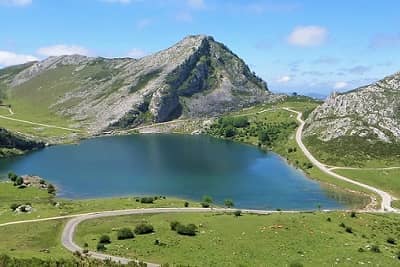Fabada Asturiana
Asturias is a fantastic region for cycling. It is home to both the Picos de Europa and the Somiedo Natural Park, boasting between them climbs such as Lagos de Covadonga,
La Farrapona and Fuente De. It is also home to the most challenging road climb in Spain - the Alto del Angliru.
In addition to the mountains, there are beautiful coastal routes around the towns of Ribadesella and Villaviciosa, as well as a significant part of the Northern Route of the Camino de Santiago.
Given the amount of cycling that both locals and visitors to Asturias do, it is a good job that the region also has a fine gastronomic tradition. Famous throughout Spain for its cheeses (the highlight being the fiercely strong Cabrales), its cider and its beef, you will never go underfed in Asturias. However, the dish most closely associated with the region, Fabada Asturiana, uses none of these products.
The fabes de la granja (white beans) are by far the most important ingredient, providing a truly unique flavour to the dish. We, at Cycle Fiesta, obviously haven't tried every type of bean in the world, but, it would be a surprise if there exists anything as tasty as fabes.
The name fabes is protected and any potential bean has to go through a rigorous selection procedure to ascertain whether or not it has the quality to pass as a 'denominacion de origen' bean. Amongst the criteria: the beans must be grown in the Asturian region; they must be of uniform size, at around 2.5cm long and 1cm wide; they must be bright white in colour; and they must have a specific level of humidity.
The Asturian soil, which receives a lot of rain in winter and a lot of sun in summer, has the perfect conditions for growing beans. Combined with the strict quality control, the result is a bean that has an unusually high content of fat and minerals, lending it a rich and creamy flavour, as well as a robust texture. It also readily absorbs the flavours of whatever it is cooked with.
As with all beans, fabes are also a healthy option. They are high in fibre, many minerals and complex carbohydrates, as well as containing a significant amount of protein.
It is difficult to do such a bean justice in words - you will simply have to try it for yourself. However, be warned that fabes are also one of the most expensive culinary beans that we have come across, with prices starting from around €10 per kilogram.
Two types of sausages are commonly used: chorizo, a cured sausage which is now very common throughout the world; and morcilla, a type of black pudding that has a very rich flavour. In addition, fabada asturiana also uses pork belly and pork shoulder to add even more depth to the dish.
Firstly it is necessary to add onion (whole or chopped), garlic and pork belly to the pot, sweating them for a few minutes in olive oil. Then add the pork shoulder, chorizo, morcilla (the sausages should be cooked whole) and fabes beans (which have been soaked overnight in water), and add just enough water to cover them. At this stage you can add seasonings - including saffron, paprika, salt and pepper.
After about two hours - or when the fabes are soft - cut the sausages into bite size pieces and serve the dish in soup bowls. In Asturias it is commonly served with crusty white bread and still cider.
Fabada con Almejas (Fabes with Clams) is another popular Asturian dish, more commonly found towards the coast. The preparation is similar to Fabada Asturiana, with the addition of clams instead of the meat; although the clams obviously need cooking significantly less than the pork shoulder.
A vegetarian version of fabada asturiana has also recently become popular in Spain. This uses different types of mushrooms in place of the meat - with shitake and oyster mushrooms commonly used for the way their flavours combine with the fabes.
However you choose to try fabes, it is something that is a must when visiting Asturias. On our cycling tours to the Great Climbs of the Vuelta a España and Picos de Europa & Asturian Coast, you will have plenty of opportunity to visit excellent restaurants and enjoy Fabada as well as other great local dishes.
Check out the information below for more details. After all, what better excuse is there for indulging in fantastic food, than spending a day in the saddle!
In addition to the mountains, there are beautiful coastal routes around the towns of Ribadesella and Villaviciosa, as well as a significant part of the Northern Route of the Camino de Santiago.
Given the amount of cycling that both locals and visitors to Asturias do, it is a good job that the region also has a fine gastronomic tradition. Famous throughout Spain for its cheeses (the highlight being the fiercely strong Cabrales), its cider and its beef, you will never go underfed in Asturias. However, the dish most closely associated with the region, Fabada Asturiana, uses none of these products.
Fabes - The Best Beans in the World
Fabada Asturiana is, on the face of it, a simple stew comprised of beans, sausages and pork fat. If you saw it described as such on a restaurant menu, you would probably quickly pass over it in favour of the many fish, lamb and beef dishes that are also common in Asturias. However, it is the quality of the ingredients that go into Fabada that make it such a well known and popular dish.The fabes de la granja (white beans) are by far the most important ingredient, providing a truly unique flavour to the dish. We, at Cycle Fiesta, obviously haven't tried every type of bean in the world, but, it would be a surprise if there exists anything as tasty as fabes.
The name fabes is protected and any potential bean has to go through a rigorous selection procedure to ascertain whether or not it has the quality to pass as a 'denominacion de origen' bean. Amongst the criteria: the beans must be grown in the Asturian region; they must be of uniform size, at around 2.5cm long and 1cm wide; they must be bright white in colour; and they must have a specific level of humidity.
The Asturian soil, which receives a lot of rain in winter and a lot of sun in summer, has the perfect conditions for growing beans. Combined with the strict quality control, the result is a bean that has an unusually high content of fat and minerals, lending it a rich and creamy flavour, as well as a robust texture. It also readily absorbs the flavours of whatever it is cooked with.
As with all beans, fabes are also a healthy option. They are high in fibre, many minerals and complex carbohydrates, as well as containing a significant amount of protein.
It is difficult to do such a bean justice in words - you will simply have to try it for yourself. However, be warned that fabes are also one of the most expensive culinary beans that we have come across, with prices starting from around €10 per kilogram.
Adding the Meat
The meat in fabada asturiana certainly plays second fiddle to the beans; however, the high quality and rich flavours, from the sausages in particular, lifts the dish to a new level.Two types of sausages are commonly used: chorizo, a cured sausage which is now very common throughout the world; and morcilla, a type of black pudding that has a very rich flavour. In addition, fabada asturiana also uses pork belly and pork shoulder to add even more depth to the dish.
Preparation of Fabada Asturiana
Fabada is quite an easy dish to prepare, with the secret lying in the quality of the ingredients (particularly the beans), rather than any fancy cooking technique. Similar to the French 'Cassoulet', fabada is prepared in one pot.Firstly it is necessary to add onion (whole or chopped), garlic and pork belly to the pot, sweating them for a few minutes in olive oil. Then add the pork shoulder, chorizo, morcilla (the sausages should be cooked whole) and fabes beans (which have been soaked overnight in water), and add just enough water to cover them. At this stage you can add seasonings - including saffron, paprika, salt and pepper.
After about two hours - or when the fabes are soft - cut the sausages into bite size pieces and serve the dish in soup bowls. In Asturias it is commonly served with crusty white bread and still cider.
Vegetarian Option and Other Uses of Fabes
The meat undoubtedly is an important part of the dish; however, there are other ways of preparing fabes to enjoy the unique taste and texture.Fabada con Almejas (Fabes with Clams) is another popular Asturian dish, more commonly found towards the coast. The preparation is similar to Fabada Asturiana, with the addition of clams instead of the meat; although the clams obviously need cooking significantly less than the pork shoulder.
A vegetarian version of fabada asturiana has also recently become popular in Spain. This uses different types of mushrooms in place of the meat - with shitake and oyster mushrooms commonly used for the way their flavours combine with the fabes.
However you choose to try fabes, it is something that is a must when visiting Asturias. On our cycling tours to the Great Climbs of the Vuelta a España and Picos de Europa & Asturian Coast, you will have plenty of opportunity to visit excellent restaurants and enjoy Fabada as well as other great local dishes.
Check out the information below for more details. After all, what better excuse is there for indulging in fantastic food, than spending a day in the saddle!
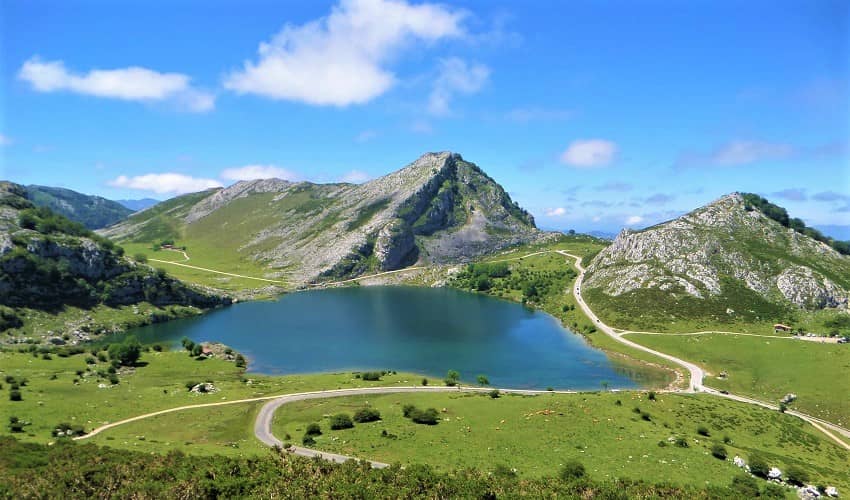
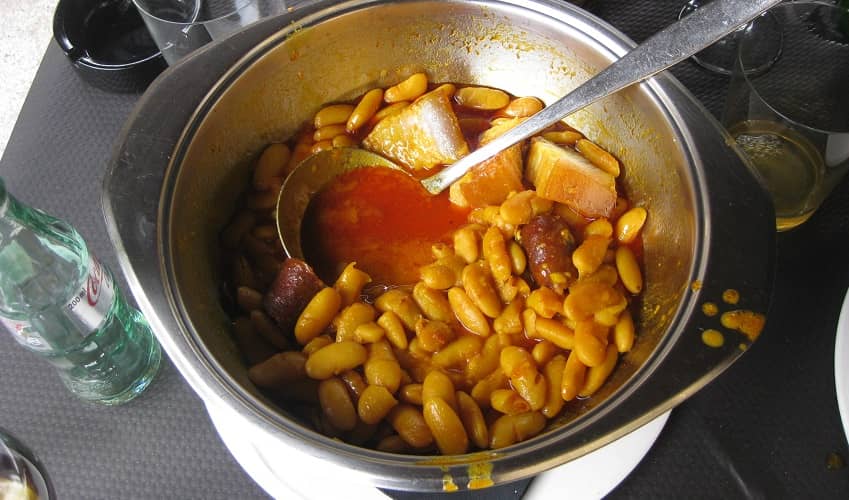
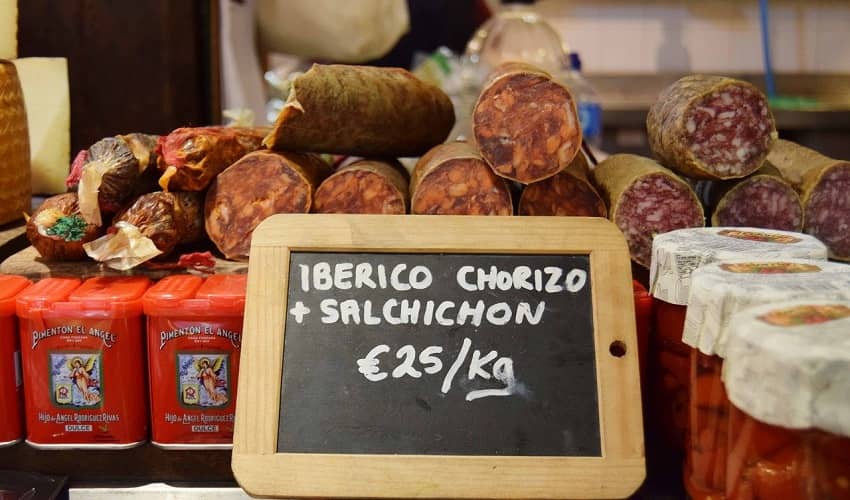
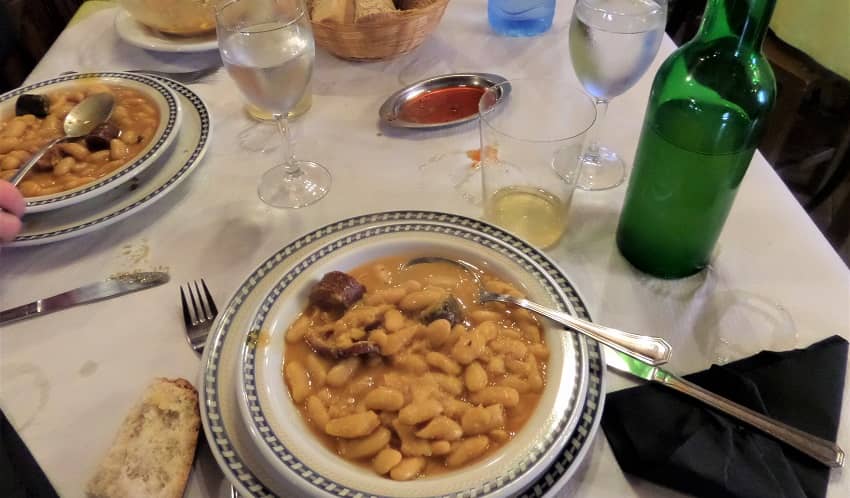
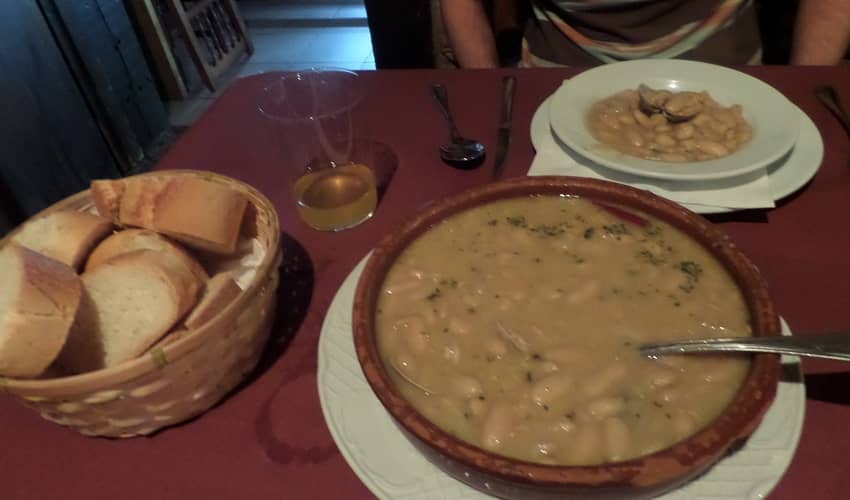
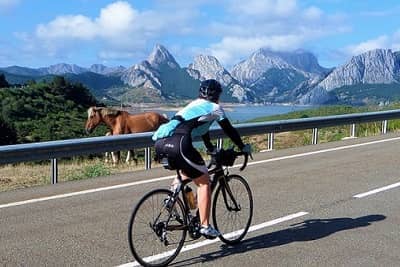
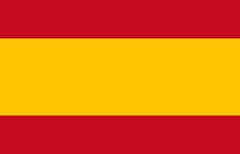 Spain
Spain
